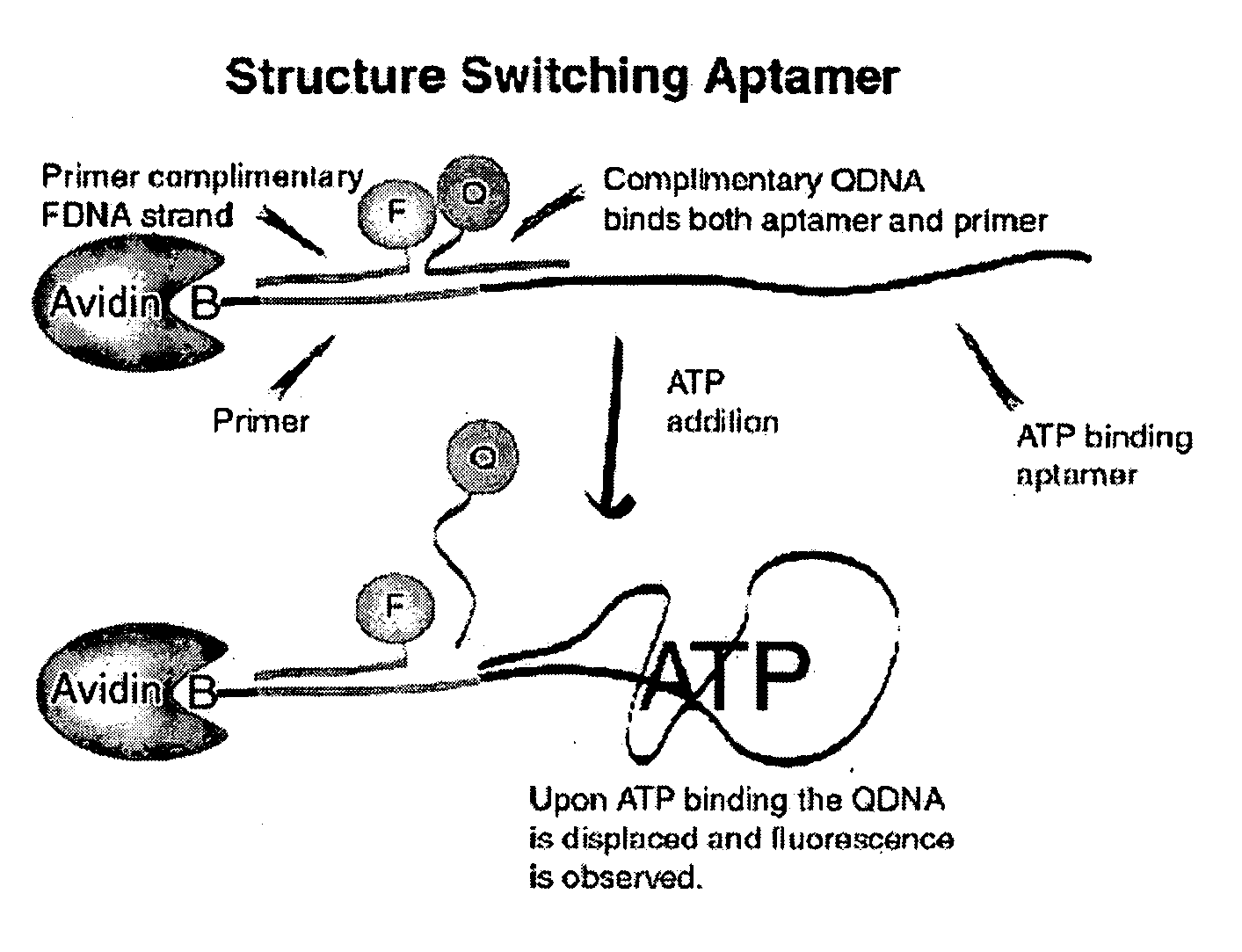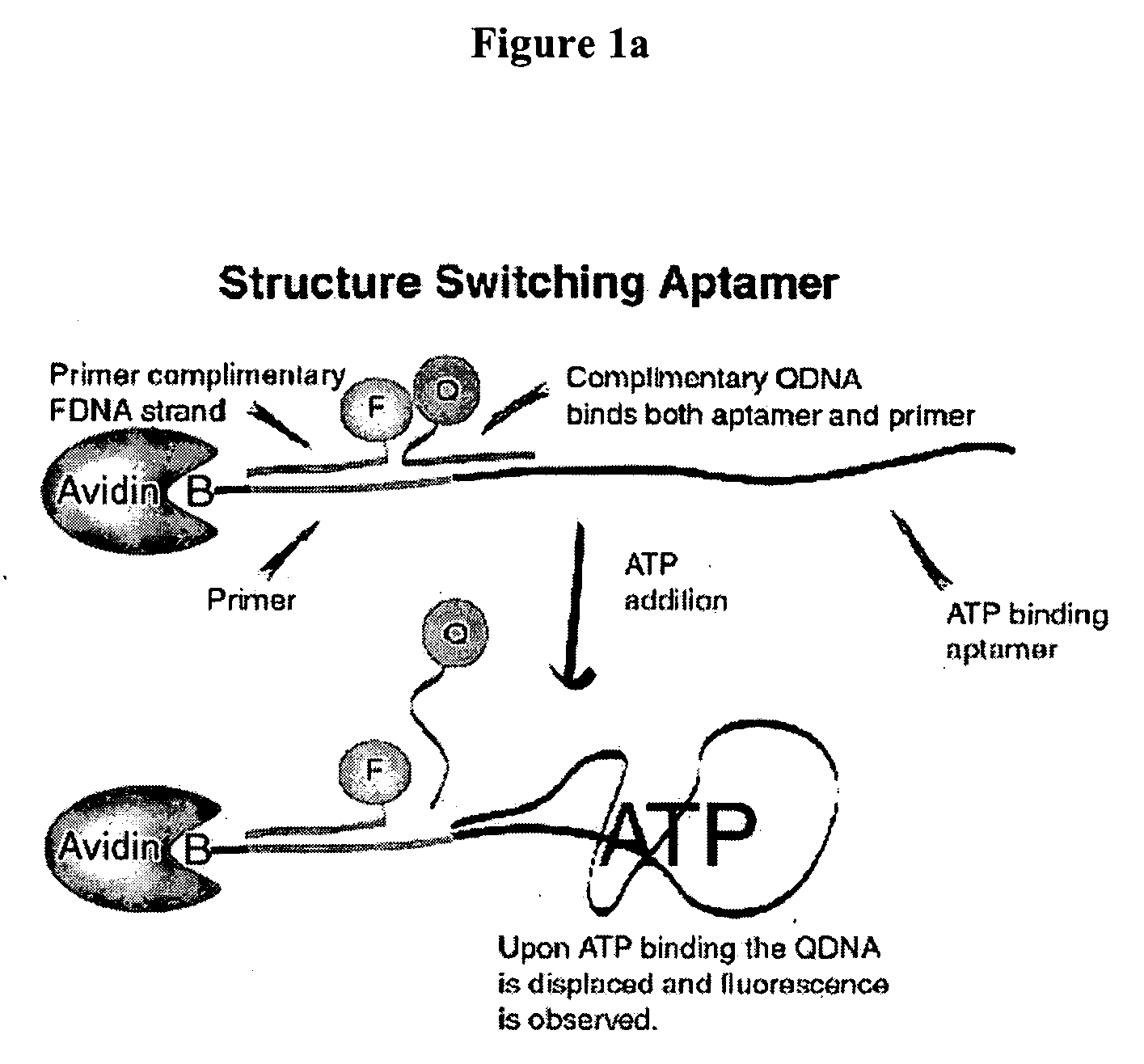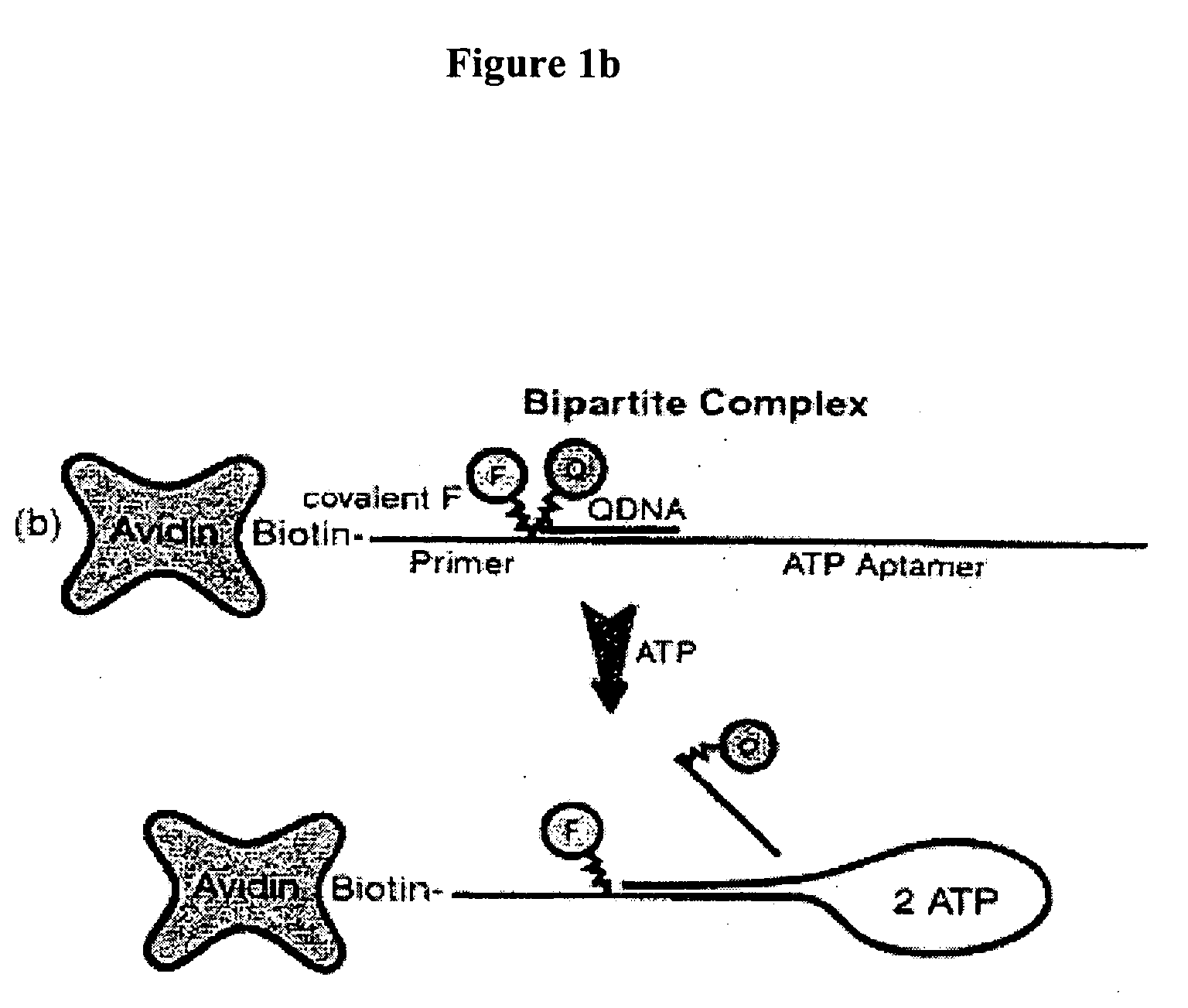Method of immobilizing nucleic acid aptamers
- Summary
- Abstract
- Description
- Claims
- Application Information
AI Technical Summary
Benefits of technology
Problems solved by technology
Method used
Image
Examples
example 1
Study on the Development of the Structure Switching Aptamer Microarrays with the Tripartite Aptamer Complex based on the Sol-Gel Pin Printing Method
Materials and Methods
[0114] Chemicals. Dowex 50×8-100 cation exchange resin, Tris buffer, adenosine triphosphate (trisodium salt, ATP) and glycerol were obtained from Sigma (St. Louis, Mo.). γ-aminopropylsilane (GAPS) derivatized glass microscope slides were purchased from Corning (Corning, N.Y.) and neutravidin coated slides were obtained from Xenopore (Hawthorne, N.J.). Sodium silicate (SS, technical grade, 9% Na2O, 29% silica, 62% water) and 3-aminopropyltriethoxysilane (APTES) were purchased from Fisher Scientific (Pittsburgh, Pa.). Fluorescein dextran (FD, 70,000 MW) was obtained from Molecular Probes (Eugene, Oreg.). Diglycerylsilane (DGS) was prepared as described elsewhere.50 Water was purified with a Milli-Q Synthesis A10 water purification system. All other chemicals and solvents used were of analytical grade.
Procedures
[0...
example 2
Study on the Entrapment of Two Forms of Structure-Switching DNA Aptamer into Biocompatible Sol-Gel Derived Materials: Tripartite Construct vs. Bipartite Construct
Methods and Materials
[0134] Chemicals. Standard oligonucleotides were prepared by automated DNA synthesis using cyanoethylphosphoramidite chemistry (Keck Biotechnology Resource Laboratory, Yale University; Central Facility, McMaster University), and purified by reversed-phase HPLC as described elsewhere.21,28 Tetraethylorthosilicate (TEOS), Dowex 50×8-100 cation exchange resin, Tris buffer and adenosine triphosphate, trisodium salt (ATP) were obtained from Sigma (Oakville, ON). Sodium silicate (SS, technical grade, 9% Na2O, 29% silica, 62% water) and aminopropyltriethoxysilane (APTES) were purchased from Fisher Scientific (Pittsburgh, Pa.). Diglycerylsilane (DGS) was prepared from TEOS as described elsewhere.53 Water was purified with a Milli-Q Synthesis A10 water purification system. All other chemicals and solvents use...
PUM
| Property | Measurement | Unit |
|---|---|---|
| Fraction | aaaaa | aaaaa |
| Fraction | aaaaa | aaaaa |
| Fraction | aaaaa | aaaaa |
Abstract
Description
Claims
Application Information
 Login to View More
Login to View More - R&D
- Intellectual Property
- Life Sciences
- Materials
- Tech Scout
- Unparalleled Data Quality
- Higher Quality Content
- 60% Fewer Hallucinations
Browse by: Latest US Patents, China's latest patents, Technical Efficacy Thesaurus, Application Domain, Technology Topic, Popular Technical Reports.
© 2025 PatSnap. All rights reserved.Legal|Privacy policy|Modern Slavery Act Transparency Statement|Sitemap|About US| Contact US: help@patsnap.com



